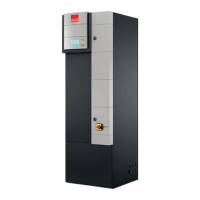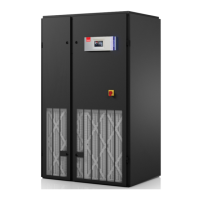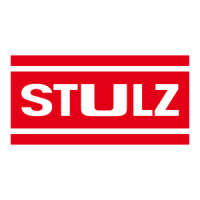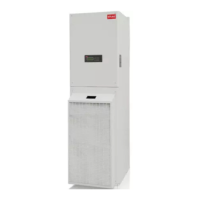What to do if Stulz Air Conditioner shows a fire alarm?
- JjohnsonjimmyAug 3, 2025
If your Stulz Air Conditioner displays a fire alarm, it means the fire alarm input has been interrupted. You should check the fire alarm system. If there isn't a fire alarm system, bypass the terminal, referring to the circuit diagram for guidance.




